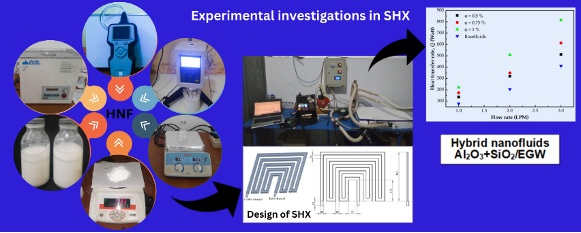Development of hybrid nanofluids and solar heat exchangers (SHX) to improve heat transfer performance in solar panel cooling
Main Article Content
Abstract
This study examined the thermohydraulic efficiency of a novel Solar Heat Exchanger (SHX) designed for cooling solar panels. The SHX was specifically created for 20 Wp solar panels measuring 450 × 350 mm. The cooling medium was a hybrid nanofluid (HNF) consisting of Al₂O₃ and SiO₂ nanoparticles (0.5–1%) suspended in a base fluid of ethylene glycol and water (EG/W) at a 10:90 ratio. Experiments were performed using flow rates ranging from 1 to 3 LPM. The HNF coolant demonstrated enhanced performance in the solar heat exchanger, with a maximum heat transfer rate increase of 56.07% compared with that of the base fluid. This improvement in the heat-transfer rate was associated with an increase in the heat-transfer coefficient, which was influenced by the flow rate and volume fraction of the HNF. The effectiveness of the HNF surpassed that of the base fluids by approximately 117%. The results indicated that higher flow rates and volume fractions improved cooling performance. The enhanced cooling efficiency and innovative SHX design make this study particularly relevant to the development of solar panel cooling systems, particularly those employing hybrid nanofluid coolants.
Downloads
Article Details

This work is licensed under a Creative Commons Attribution-NonCommercial 4.0 International License.

